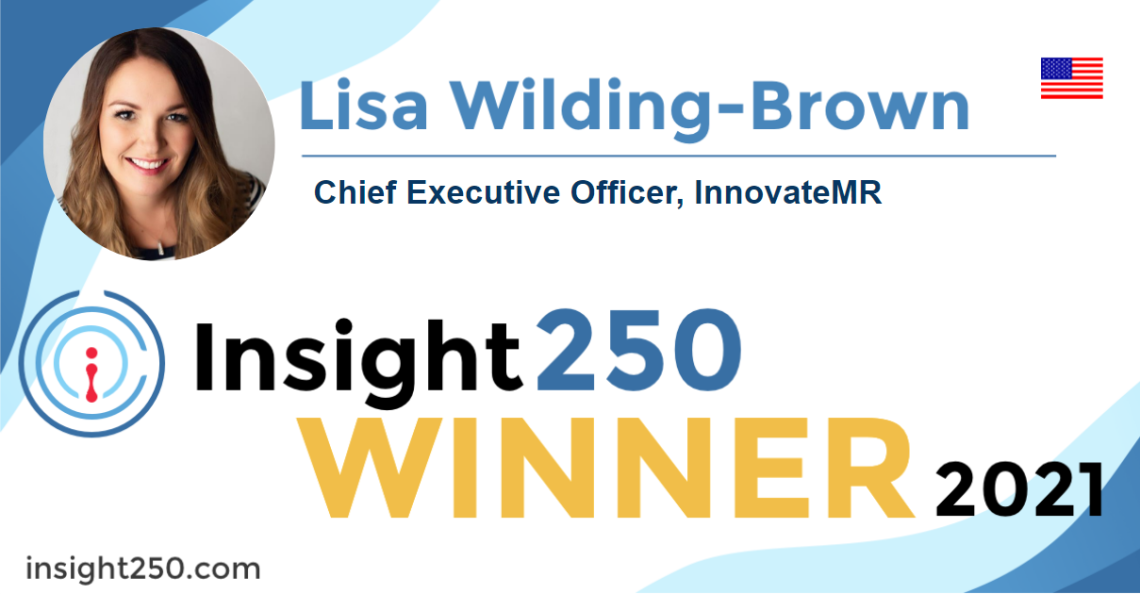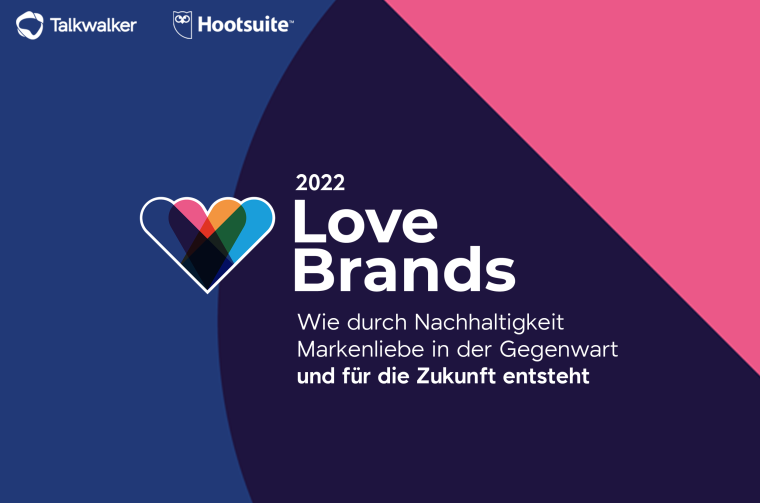Designing Research to Enhance Participation
Crispin sits down with Lisa Wilding-Brown, CEO of Innovate MR to discuss the strategies and tactics to deliver more engaging, effective research to understand consumer, markets and competitors.

The Insight250 spotlights and celebrates 250 of the world’s premier leaders and innovators in market research, consumer insights, and data-driven marketing. The inaugural list was revealed in April 2021 and created renewed excitement across the industry whilst strengthening the connectivity of the market research community.
With so many exceptional professionals named to the Insight250, it seems fitting to tap into their expertise and unique perspectives across an array of topics. This weekly series does just that, inquiring about the expert perspectives of many of these individuals in a series of short topical features.
As engaging consumers becomes increasingly challenging, understanding their tendencies and preferences has never been more critical. This is largely why market research is gaining increased attention with many brands. I sat down with Lisa Wilding-Brown, CEO of Innovate MR, to discuss the strategies and tactics to deliver more engaging, effective research to understand consumer, markets and competitors.
Crispin: Lisa, almost a year ago, you took on the CEO role at InnovateMR - for the international audience, what’s InnovateMR’s speciality?
LWB: InnovateMR is a fiercely independent global sampling and ResTech company that delivers faster answers from business and consumer audiences. As industry pioneers, our firm connects organisations with targeted audiences around the world and develops forward-thinking products to support informed, data-driven strategies, and identify growth opportunities. We furnish a wide variety of different audiences across 90+ markets. Whether you need cereal purchasers in Canada, tech decision-makers in South Korea, or moms with babies in the US, we have pioneered panel recruitment programs to find audiences across the globe. We enjoy a long tenure of demonstrated thought leadership in sampling high-quality participants and we leverage both methodological and technological strategies to mitigate poor-quality responses.
Just last year, our firm released InnovateMR’s newest award-winning product collection, the Vision Suite™ which offers researchers a comprehensive collection of next-generation products designed to execute against all aspects of the research process including survey design, sample procurement, field management, fraud mitigation and reporting. Our firm essentially has two channels within our business, we can do all the heavy lifting through our managed services division or clients can leverage our suite of technology products to take on a more autonomous and independent role as they execute their research. Whichever your desired path for highly rigorous research, InnovateMR has you covered.
Crispin: Why are panels and communities so important in research?
LWB: Panels and communities are the lifeblood of our industry. It’s no secret that I, along with my esteemed colleagues, have invested a great deal of time and energy socializing the importance of a positive participant experience over the years. As an industry, we can lament over the perfect survey instrument, conduct rigorous analysis, and implement activation strategies, but we must never lose sight of the critical role the participant holds in our eco-system. While the sampling sector has embraced programmatic sourcing and deployment solutions to generate greater efficiencies and scale; panels and communities still very much have a role to play in research. Granted, programmatic APIs serve as important connective tissue in our industry. However, we must always be mindful that participants are originating from somewhere on the internet and there are very real and material implications to these sources, the incentives that are being offered and the cadence by which people participate. Panels, in particular, can serve the research community with an opportunity for deeper segmentation as well as reduce the operational friction associated with longitudinal research. Panels can also be very helpful in finding hard-to-reach populations that are otherwise challenging to identify through other modes of recruitment as well as help to generate deeper insights for brands looking to understand their target customers, competitor customers and prospects. The opportunities with panels are endless, however, they can be very time-consuming and expensive to build. As such, if you are entertaining the idea of building a custom panel, recognize the deep investment and commitment it will require and never lose sight of measuring lifetime value and maintaining a healthy and positive experience for members.
Crispin: Why is the design of the research so important, what can go wrong?
LWB: I’m glad you asked, Crispin! Over the course of my 20-year career, I’ve seen a lot that can go wrong! When I first started in the industry, I studied design techniques and best practices a great deal, however, I’ve observed quite a bit of disintermediation in our industry which has created new opportunities and challenges. As more DIY products hit the market and various levels of an organisation (as well as non-researchers) get in the game of authoring surveys, I strongly believe that rigorous design standards have taken a back seat. Now, let me be clear, I think it is a great thing to see the democratisation of data in our world. The more professionals that lean on data to help inform their decisions, the more appreciation, recognition, and growth our industry will enjoy. However, we must implement training, and standard operating procedures and further embrace technology to support those who may not have a strong understanding of optimal survey design. Failing to recognise the importance of design discipline can lead to poor quality data and a negative participant experience which can result in bad decision-making and further compress our sample universe. Sadly, in 2022, I am still seeing very long surveys, desktop-only studies, intensely complex grids, and too many yes/no questions which will lead to false positive qualifications. Simply put: there is room to improve the design standards in our industry. For those reading, lean on the many resources as well as literature available online and get involved in the myriad of industry associations available to insights professionals like the Insights Association, the Market Research Society, and ESOMAR to name a few. There are countless other regional and country-specific associations that can serve as a great resource for design best practices and many of these organisations have certification programs available to upgrade your skills.
Crispin: Participant retention is an issue we hear more and more about ... why should this concern our profession?
LWB: Our participant universe does not operate in a vacuum; it is organic and evolving. When one company fatigues a participant through poor design practices or arduous sample routing mechanics, we ALL feel the pain. We must be mindful of the experience we are creating for survey participants from start to finish. As more and more individuals attrite from panels and research communities, we run the risk of being left with only those who have the highest pain threshold, and this unfortunate dynamic threatens the very bedrock of our industry… representation! Aside from the blatant challenge of having an adequate population by which to project, poor retention will yield feasibility issues which can be especially difficult for those seeking low-incidence populations. We all need to care about participant retention as it impacts every single professional in the industry, even if you don’t directly source or buy samples!
Crispin: How can we improve participant retention?
LWB: Improving participant retention starts with empathy. As researchers, it is our job to understand the behaviors and perspectives of the audiences we are measuring; to give a voice to the voiceless… if that isn’t empathy, I don’t know what is! While improving retention can feel like a massive lift, there are simple things we can all do to move the needle. For example, work with a sample partner that shares your commitment to a high-quality sample and generates a better user experience through sound panel management procedures, meaningful incentives, and interviews at a steady, non-overzealous cadence. Focus on a simple and streamlined survey design that is mobile optimised and remain ever mindful of the cultural nuances of the markets where your research is being conducted. While overlaying translations adds extra expense, I cannot stress enough the importance of interviewing participants in-language. Just because a country has a heavy use of English, doesn’t mean it is appropriate to restrict the survey to English only!
Additionally, weighting diverse cohorts on the backend saves you money but ignoring these segments of the population in your sample is a material miss and runs counter to everything we stand for as an industry. There are countless resources online to help researchers consider alternative approaches that facilitate a participant-first strategy. I’m very proud of the work InnovateMR had done through the years on this topic as well as our involvement in the Global Research Business Network’s Participant Handbook. This is a great guide to give researchers tactical and real-world solutions to create a better experience for survey participants. It’s one thing to download the handbook, save it to your computer and forget about it. Be a change agent at your organization, digest the best practices and find ways to socialise them both in and out of your organisation.
Crispin: So many look at the volume of responses, but how do we monitor and champion the quality of responses and the representation of responses?
LWB: I’ve hosted countless webinars and presented at several conferences on this very topic. I’m a quantitative researcher at heart and I will always appreciate large N sizes as the golden source of truth. However, there is a lot that can go off the rails in online research if you don’t source a high-quality sample frame and impose various layers to protect your research from the dangers that lurk in the messy ecosystem we call the internet! Firstly, there will always be noise and dissonance in data. As researchers, we need to accept this fact and implement various checks in our surveys. This challenge is especially evident as you seek low incidence and niche populations since it requires your sample provider to cast a wider net to find that needle in the haystack.
Never underestimate the role of a solid and well-crafted screener. Don’t assume that your sample is pristine as it comes into the front door of your survey; navigate participants through a rigorous screening exercise to ensure you qualify the right people. Further, add open-ends to your survey so you can take a more qualitative view of the respondent and include red-herrings that pressure-test domain expertise. Survey bots have become incredibly sophisticated and are far more humanistic nowadays so don’t rely on basic computational questions to assess the attention or authenticity of the participant. Instead, present short lists with both real and fake brands, as an example, and ask questions that only truly qualified individuals can answer. Aside from these methodological examples, lean on technology to help cull out the bad actors through tools such as digital fingerprinting, reCAPTCHA, programmatic honeypots, and longitudinal behavioral assessments. The takeaway here is that there is no silver bullet to stop survey fraud. If global survey fraud and the economic damage it generates every year were a country, it would be the third largest after the United States and China! Let that factoid sink in. Survey fraud isn’t going away, but there are material actions you can take to avoid being a victim. In terms of representation, I’ve seen too many researchers skip over diverse cohorts since it is more expensive to recruit these populations. Instead, these researchers rely on weighting these populations on the backend, which is an irresponsible approach, in my opinion. Build out nested quota design and ensure there is an adequate base size so that all voices get a seat at the survey table. It isn’t just the right thing to do, it is imperative for proper representation and rigor.
Crispin: Increasingly, clients want a 24/7 service; can you deliver high-quality, robust research at speed or does high quality slow down the speed with which response can be delivered?
LWB: There is no doubt about it, we live in an exceptionally fast-paced world. I can order something from Amazon Prime and have it at my door at blazing speed. I can access the internet from my mobile phone as I run through the airport to catch my next flight. I can order groceries from an app on my phone and unpack them in my kitchen within the hour. We live in a world of instant gratification, so it is no surprise that the demands on our profession model this dynamic too. When online research first surfaced as a methodology, I would see many companies tout that they could do it faster, better, and cheaper. I don’t think this utopic trifecta exists; I think you can have faster research that is high quality, but I don’t believe you can tap this through inexpensive sources. In fact, quality isn’t expensive, it’s priceless! Expect to pay more for high quality as there is an arsenal of layers that must be indoctrinated to preserve excellence.
Crispin: How do you feel technology will continue to change our profession?
LWB: Since the inception of my career, I’ve been captivated by the role that technology plays in our profession. When I got my start at Harris Interactive, the world of online research was just starting to take shape. Back then, it was seen as an unproven and untested methodology; I spent my earlier years conducting research-on-research to prove the concept as well as help our clients navigate the many new opportunities that were now available to them. It was an incredibly exciting time in the industry and since then, we’ve seen many companies (old and new) accelerate their commitment to technological solutions to gain efficiency, reach and impact. Needless to say, it’s been a fun and wild ride and as I reflect on the last 20 years, I feel a strong sense of pride in what our industry has accomplished. Keep in mind that new technologies can have both a positive and negative impact if we aren’t mindful of the implications they can have on our insights. Who better to understand the impact of technology than the research industry? We love to test and measure! I’m excited for the future of our industry and I very much believe that technology is the vehicle that will take us there.
Crispin: Should we embrace these technological changes or try and resist them?
LWB: Resistance is futile! The train has left the station. Jump on board before the technology reaches a speed that leaves you flailing in its wake. While researchers can be risk-averse by nature, technology presents new opportunities for us to harness that will ultimately make us better at our jobs. For example, don’t run away from the important role of AI and machine learning. There is tremendous value in data science that will dominate our space in the future. Don’t ignore the exceptionally high mobile penetration rates found in most countries; continuing to focus on desktop only (because your survey design doesn’t lend itself to a mobile screen) will exclude critical segments of the general population. Sticking your head in the sand will only make your skills (and ultimately your contributions) irrelevant!
Crispin: You’re on the Council of ESOMAR, should ESOMAR and other associations do more to help the profession embrace technological change?
LWB: I can’t stress enough the important role that organisations like ESOMAR serve in our industry. Associations like ESOMAR support members in a wide variety of ways by facilitating networking opportunities, continued learning and certifications, developing and maintaining ethical standards for data collection and so much more! I wholeheartedly agree that these organizations will add tremendous value for members as our profession further embraces technological change. As a council member, we spend a lot of time exploring new technologies and the implications they have on our profession. Just recently while in Amsterdam, our Council toured a section of the city deemed Amsterdam’s ‘smart city,’ an initiative to improve urban planning which focuses on mobility intelligence and leveraging data-driven insights with the aim of improving transportation, reducing the population’s carbon footprint, and creating a healthier and more balanced environment to better serve the city’s residents. It was a fascinating and inspiring tour. My fellow council members and I invested a great deal of time discussing the implications of this form of progressive data collection and its potential impact on our industry and beyond.
HOT TOPIC: Mentoring
Crispin: You’re a mentor for WIRe - what does this mean and why do you think mentoring is so important?
LWB: Mentoring has been a passion of mine for as long as I can remember. I look back to the early years of my career and I’m beyond thankful for my mentors. These amazing colleagues shared their time, knowledge, and resources with me, and I know I wouldn’t be where I am today had they not been part of my journey. I believe mentorship is vitally important not only for the mentee but for the mentor too! I’ve learned so much through my discussions with mentees through the years; they’ve helped me to think about opportunities and challenges through a different lens. I’m a firm believer that we must all commit to being lifelong learners and find ways to give back. While I know I have a great deal of expertise, there is so much more to learn. Leading with a generous, kind, and curious heart will shepherd you to places you never expected.
TOP TIP:
Crispin: And what would your top tip be for readers?
LWB: While we work in the data business, it always surprises me how many of us in the industry still make critical business decisions from our gut! Chefs taste their food before it leaves the kitchen; insights professionals should always rely on data to drive their decision-making. We must never lose sight of this mantra as we manage, build, and evolve our respective companies and industry. I once read that “a comfort zone is a beautiful garden, but nothing ever grows there,” remember… it’s ok to be uncomfortable, in fact, that’s where the learning happens. Arm yourself with a data-driven approach and a courageous spirit, and you can achieve success beyond your wildest expectations.
Crispin: That’s a great top-tip, Lisa – I love the analogy. I’m sure everyone will agree that as research becomes an increasingly critical dimension of understanding customer trends and tendencies, Lisa’s advice is critical. Designing effective research methodologies that drive participation and prompt engagement is necessary to gather intelligence today. As individuals are inundated with communications, adopting research that attracts, motivates, and ultimately collects insight that can be used to deliver engaging interactions, and exceptional experiences couldn’t be more fundamental. Thank you, Lisa.
 Lisa Wilding-Brown currently serves as the CEO of InnovateMR having been declared a winner of the Insight250 whilst serving as Chief Research Officer for InnovateMR where she focused on innovative approaches for optimal research design and participant retention. Congratulations again on the well deserved promotion. Lisa is a Member of Women in Research, the Multicultural Insights Collective, and a Council Member of ESOMAR. She is also an Insight Association Laureate and a recipient of the Global Research Business Network’s Excellence Program.
Lisa Wilding-Brown currently serves as the CEO of InnovateMR having been declared a winner of the Insight250 whilst serving as Chief Research Officer for InnovateMR where she focused on innovative approaches for optimal research design and participant retention. Congratulations again on the well deserved promotion. Lisa is a Member of Women in Research, the Multicultural Insights Collective, and a Council Member of ESOMAR. She is also an Insight Association Laureate and a recipient of the Global Research Business Network’s Excellence Program.
Crispin Beale
Chairman at QuMind, CEO at Insight250, Senior Strategic Advisor at mTab, CEO at IDXCrispin Beale is a marketing, data and customer experience expert. Crispin spent over a decade on the Executive Management Board of Chime Communications as Group CEO of leading brands such as Opinion Leader, Brand Democracy, Facts International and Watermelon. Prior to this Crispin held senior marketing and insight roles at BT, Royal Mail Group and Dixons. Crispin originally qualified as a chartered accountant and moved into management consultancy with Coopers & Lybrand (PwC). Crispin has been a Board Director (and Chairman) of the MRS for nearly 20 years and UK ESOMAR Representative for c15 years. As well as being CEO of Insight250, Crispin is currently Worldwide CEO of Digital Communications Solution Agency, IDX. Crispin is also the Senior Strategic Advisor at mTab and the Chairman of QuMind and spent 4 years as Group President of Behaviorally where he was responsibile for the client & commercial teams globally. Crispin is a passionate advocate for blending human intelligence and technology to deliver innovation and leadership across organisations.


